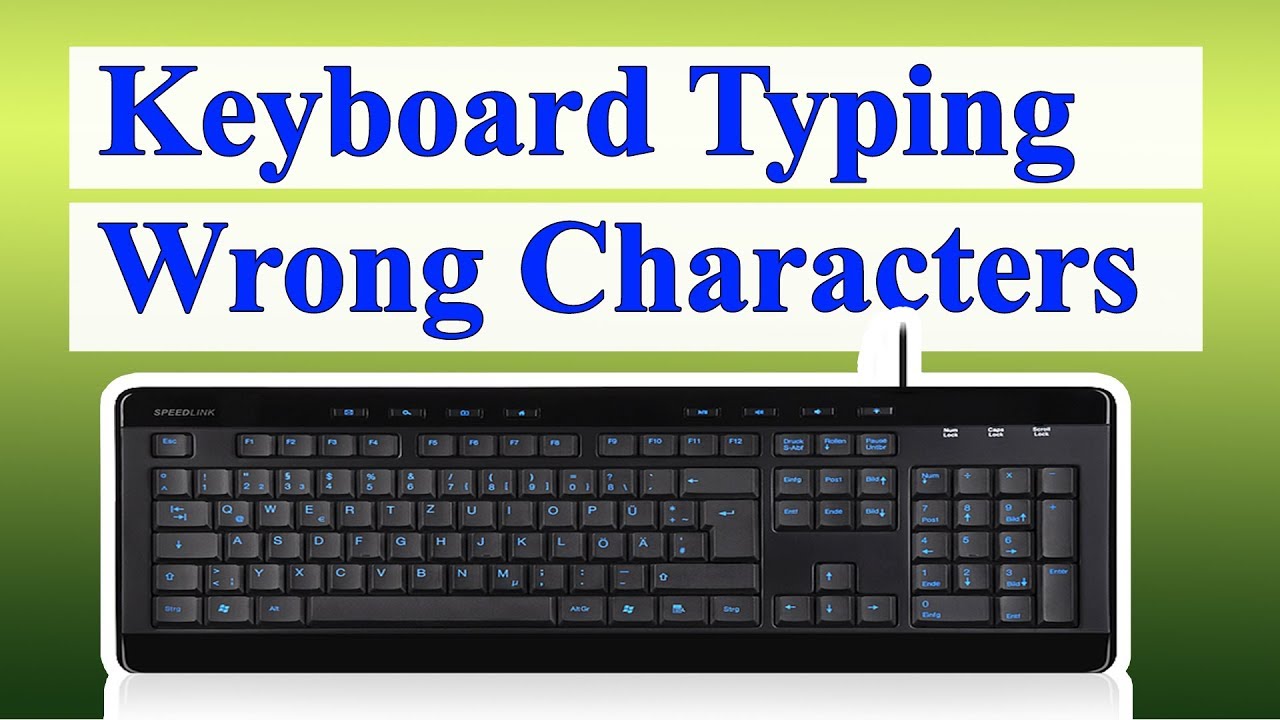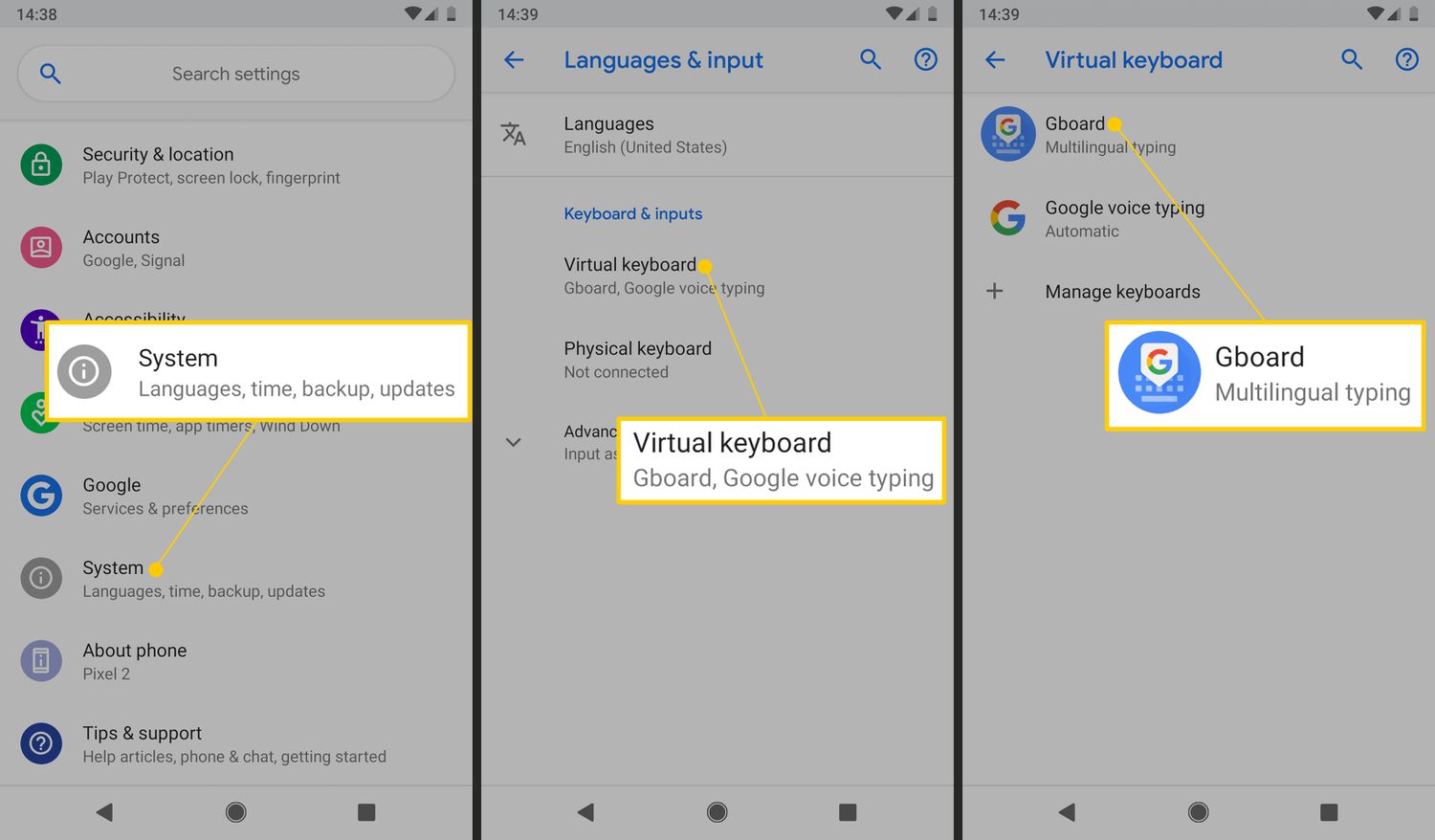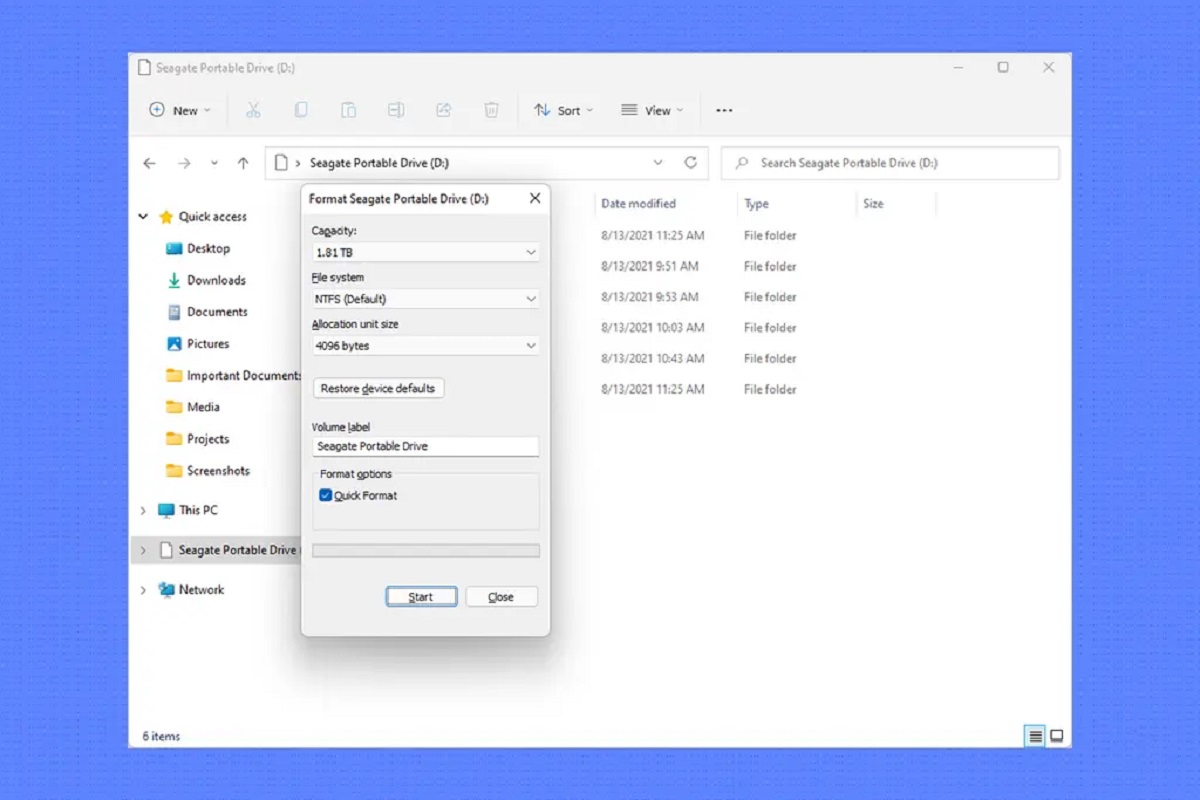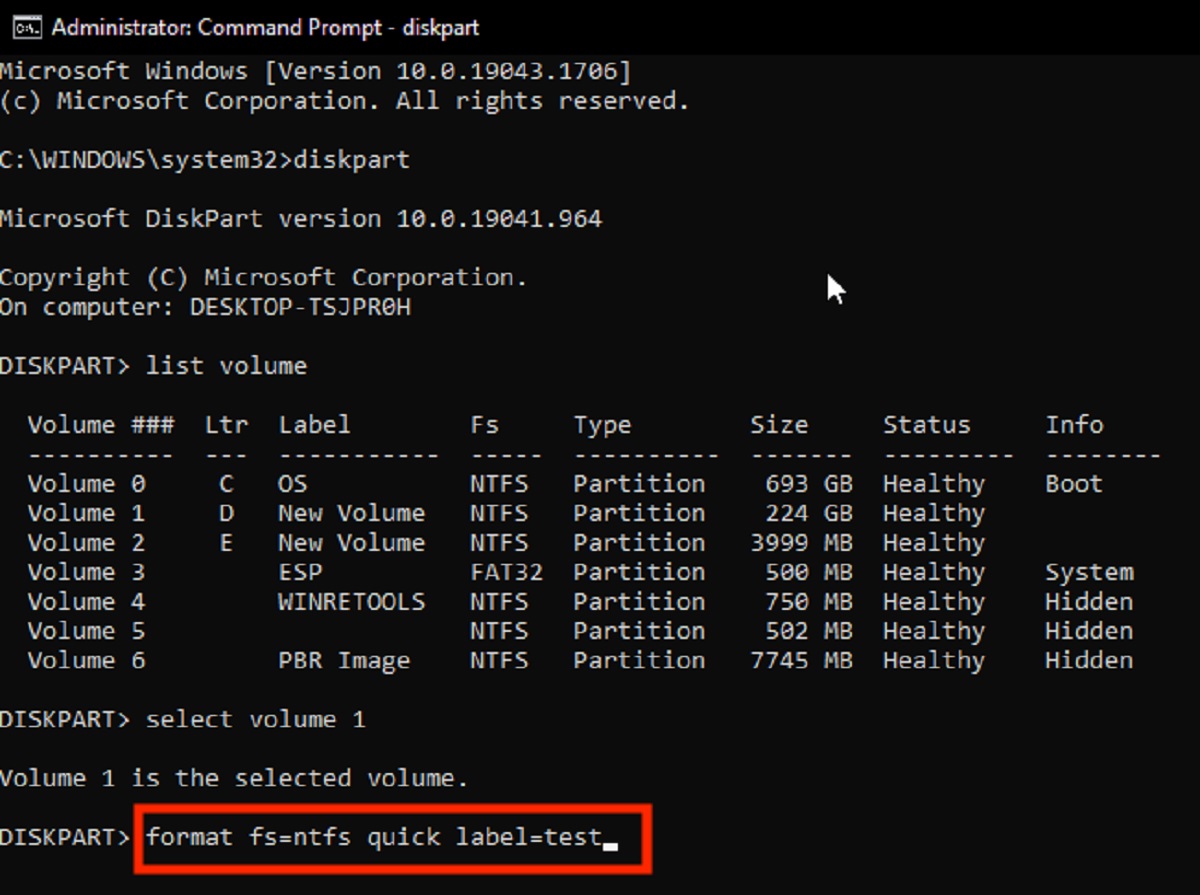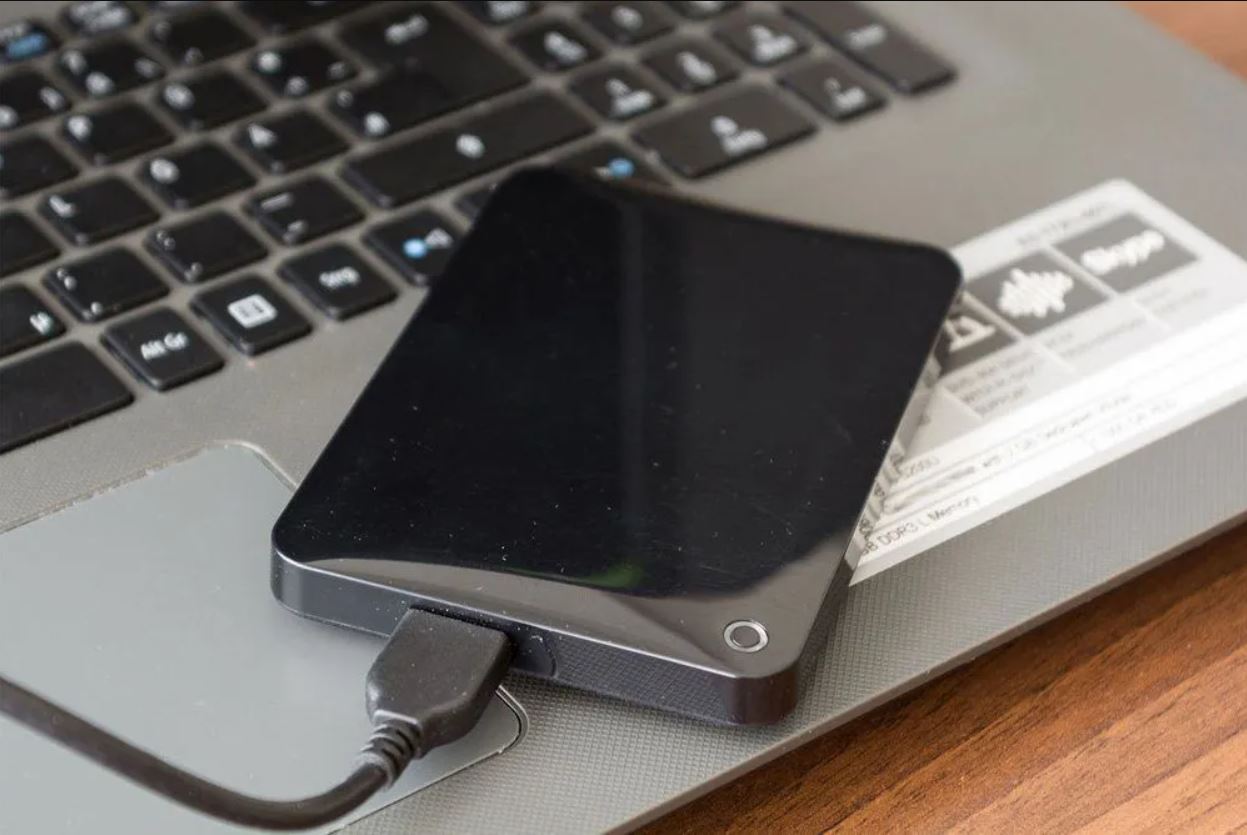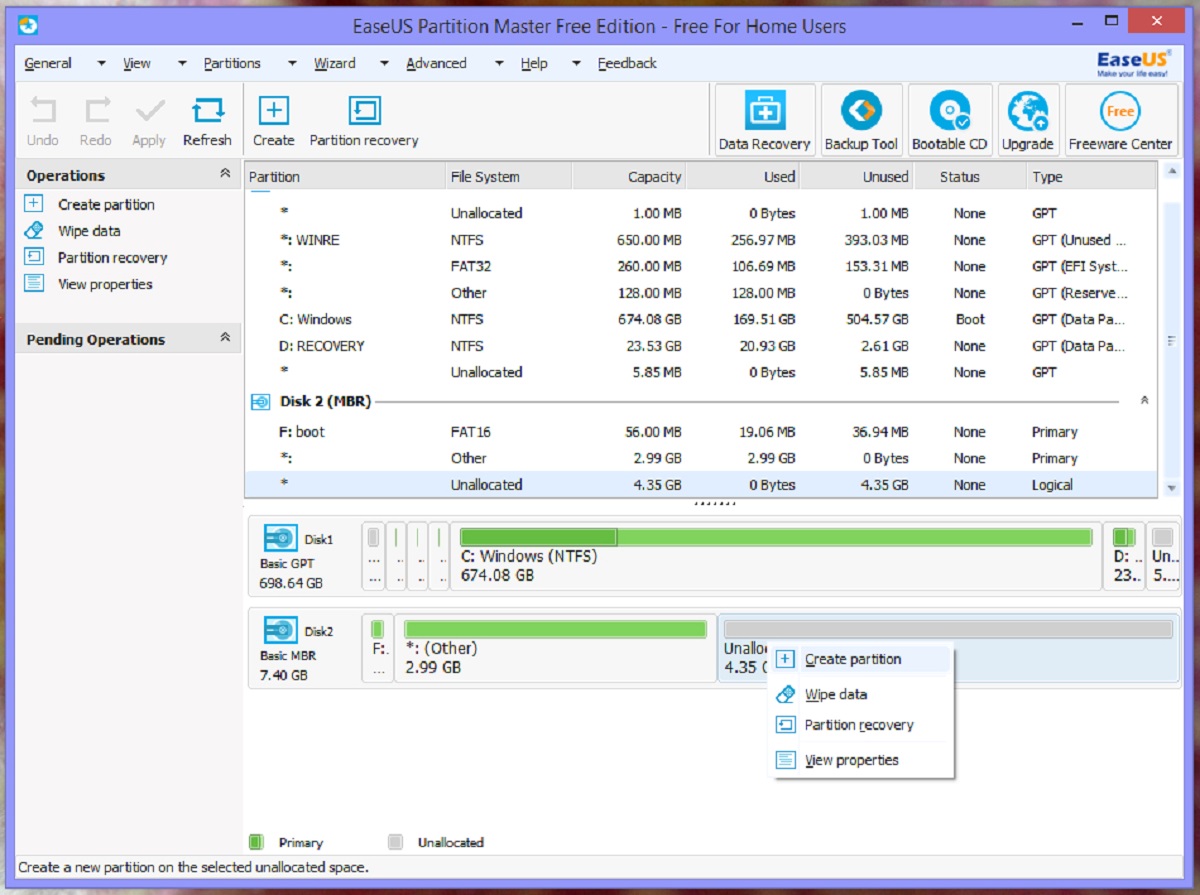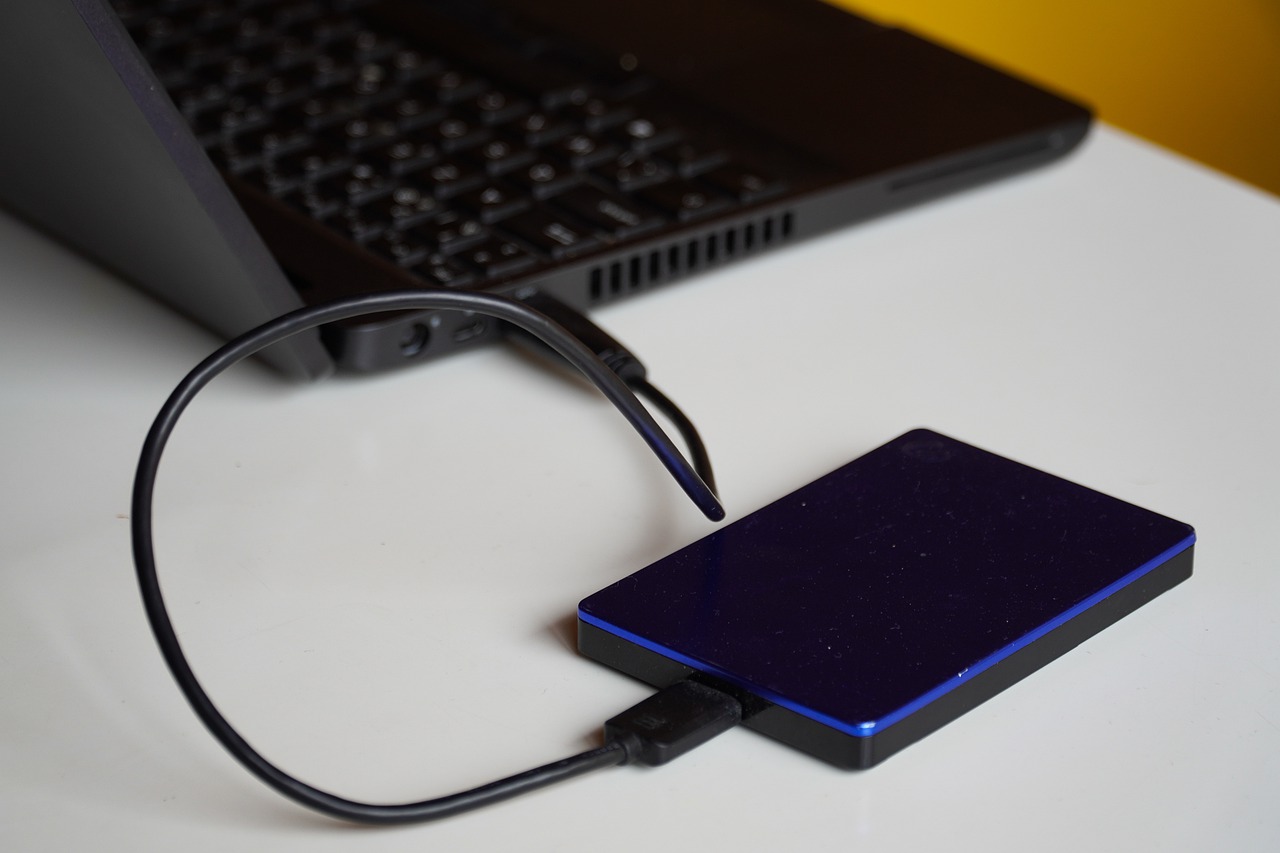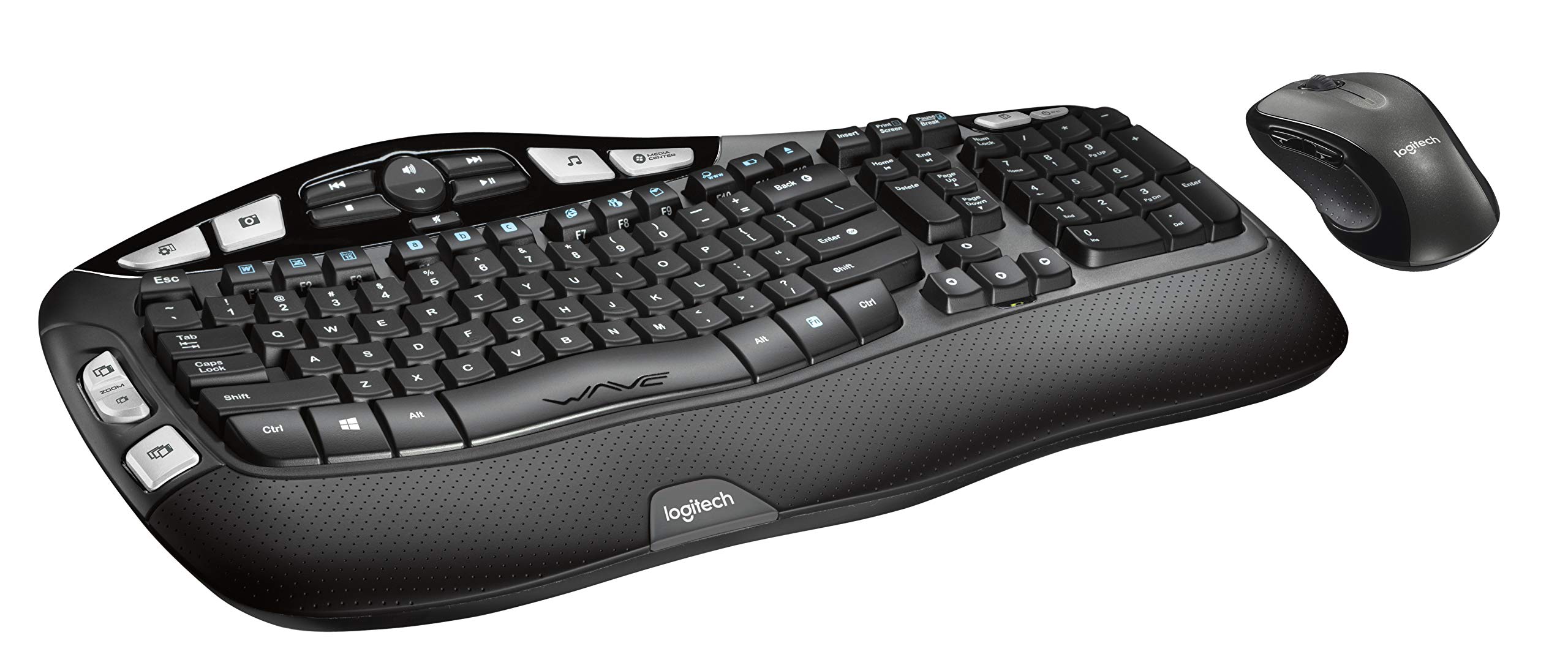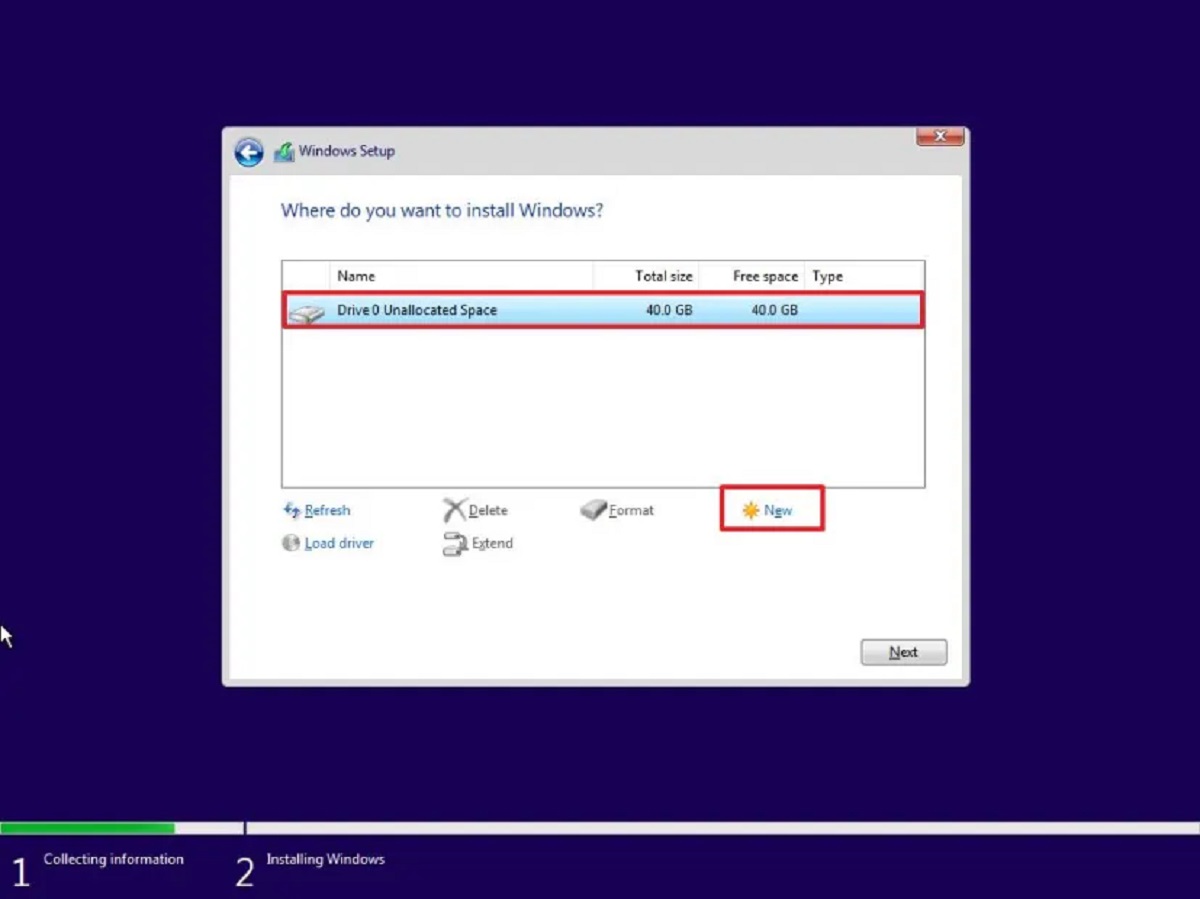Introduction
Your keyboard is an essential tool for interacting with your computer, whether you are typing a document, sending an email, or playing a game. But what happens when your keyboard starts typing the wrong letters? It can be frustrating and confusing, especially if you rely on your keyboard for work or everyday tasks.
There are several reasons why your keyboard may be typing wrong letters, ranging from software glitches to physical damage. In this article, we will explore these common causes and provide you with practical solutions to fix the issue.
Before we delve into the troubleshooting steps, it’s important to note that the information provided here is applicable to both wired and wireless keyboards. So, whether you’re using a traditional USB keyboard or a sleek Bluetooth keyboard, the potential causes and solutions discussed here can be applied.
Now, let’s dive into the common reasons why your keyboard might be typing wrong letters and the steps you can take to resolve the issue.
Common Causes of Keyboard Typing Wrong Letters
When your keyboard starts typing the wrong letters, it can be frustrating to figure out the cause. However, there are several common reasons why this might happen:
- Sticky Keys: Sometimes, the keys on your keyboard can become stuck or get stuck in between key presses. This can result in the wrong letters being typed when you press a key.
- Language Settings: Language settings can sometimes get changed accidentally, causing your keyboard to type in a different language or with a different keyboard layout.
- Loose Connection or Broken Keys: If your keyboard is not properly connected to your computer or has broken keys, it can cause the wrong letters to be typed.
- Driver Issues: Outdated or corrupted keyboard drivers can also lead to typing issues. Drivers are software that allows your operating system to communicate with your keyboard, so any issues with the drivers can result in incorrect letter inputs.
- Software Glitches: Occasionally, software glitches or conflicts can cause your keyboard to malfunction and type the wrong letters. This can happen after installing a new program or update.
- Physical Damage to the Keyboard: Accidental spills, drops, or other physical damage to your keyboard can disrupt its functioning, resulting in incorrect letter inputs.
Identifying the root cause of the issue is the first step in resolving it. In the next section, we will discuss various methods to fix the problem and get your keyboard back to typing the correct letters.
Sticky Keys
Sticky keys can be one of the culprits behind your keyboard typing wrong letters. Sticky keys occur when a key gets stuck or doesn’t fully release after being pressed, causing unintended repeated keystrokes or incorrect letter inputs.
To check if sticky keys are the cause of your keyboard issues, try the following steps:
- Clean the Keys: Start by cleaning the affected keys using a can of compressed air or by gently wiping them with a soft, lint-free cloth. Dirt, debris, or spilled liquids can cause the keys to stick, so removing any obstructions may resolve the issue.
- Disable Sticky Keys: In some cases, the sticky keys feature may be turned on, which can cause unexpected keyboard behavior. To disable sticky keys, go to the Control Panel (Windows) or the Accessibility settings (Mac), and adjust the keyboard settings accordingly.
- Check for Physical Damage: Inspect the keys to see if there is any visible damage. If a key appears to be physically damaged or is not fully returning to its original position, you may need to replace the affected key or consider replacing the entire keyboard.
If cleaning the keys and disabling sticky keys doesn’t resolve the issue, it’s time to move on to the next troubleshooting steps to identify and fix other potential causes of your keyboard typing wrong letters.
Language Settings
Another common reason for your keyboard typing wrong letters is incorrect language settings. Sometimes, your keyboard can be set to a different language or a different keyboard layout, causing the keys to correspond to different letters or characters. This can lead to confusion and incorrect letter inputs.
To fix language-related keyboard issues, you can follow these steps:
- Check the Language Settings: On Windows, go to the Control Panel or the Settings app and navigate to the “Language” or “Region & Language” section. Ensure that the correct language and keyboard layout are selected. On Mac, go to the System Preferences and click on “Keyboard” and then “Input Sources” to verify the language settings.
- Add or Remove Languages: If the incorrect language is selected, you can remove it from the list of installed languages or add the desired language. Make sure to set the appropriate keyboard layout for the language you want to use.
- Keyboard Shortcut: Sometimes, unintentional keyboard shortcuts can switch between language settings. Pressing a specific combination of keys can trigger a language change. Check if you accidentally triggered a language switch, and press the same shortcut to revert to the desired language.
By verifying and adjusting your language settings, you can ensure that your keyboard inputs the correct letters or characters according to your chosen language and keyboard layout.
If the language settings are not the cause of your keyboard typing wrong letters, continue to explore the other potential causes and solutions discussed in this article.
Loose Connection or Broken Keys
A loose connection or broken keys can also lead to your keyboard typing wrong letters. If the keyboard is not properly connected to your computer or if certain keys are physically damaged, it can affect the input signals and result in incorrect letter outputs.
To address connection or key-related issues, consider the following steps:
- Check the Connection: If you’re using a wired keyboard, ensure that the USB or PS/2 connector is securely plugged into the proper port on your computer. If it’s a wireless keyboard, make sure it’s properly connected to your computer or device via Bluetooth or a USB receiver. Disconnect and reconnect the keyboard to ensure a secure connection.
- Test with a Different Keyboard: If you have access to another keyboard, try using it and check if the issue persists. If the alternative keyboard works fine, it indicates a problem with your original keyboard, such as loose connections or broken keys.
- Inspect for Physical Damage: Examine your keyboard for any physical damage, such as loose or displaced keys, broken key switches, or liquid spills. If you notice any visible issues, you might need to replace the faulty keys or consider replacing the entire keyboard.
Addressing loose connections or broken keys can help restore proper functionality to your keyboard and ensure that the correct letters are being typed. If these steps don’t resolve the issue, proceed to the next troubleshooting methods mentioned in this article.
Driver Issues
Outdated or corrupted keyboard drivers can also be a reason for your keyboard typing wrong letters. Keyboard drivers are software components that allow your operating system to communicate with your keyboard effectively. If there are issues with these drivers, it can result in incorrect letter inputs or keyboard malfunctions.
To address potential driver-related issues, you can follow these steps:
- Update Keyboard Drivers: Start by checking for driver updates. You can visit the manufacturer’s website for your keyboard model and download the latest drivers, if available. Install the updated drivers and restart your computer to see if it resolves the keyboard issue.
- Rollback Driver Update: If you recently updated your keyboard driver and started experiencing issues, you can try rolling back the driver to the previous version. Open the Device Manager on Windows or the System Preferences on Mac, locate the keyboard driver, right-click, and select “Properties” or “Options” to find the option to roll back the driver update.
- Reinstall Keyboard Drivers: If updating or rolling back the driver doesn’t fix the issue, you can consider uninstalling and reinstalling the keyboard drivers. In the Device Manager on Windows, right-click on the keyboard driver, select “Uninstall,” then restart your computer. Windows will automatically reinstall the drivers upon restart. On Mac, you can try deleting the keyboard driver from the System Preferences and connecting the keyboard again for the system to reinstall the necessary drivers.
By addressing potential driver issues, you can ensure that your keyboard functions properly and types the correct letters. If the keyboard issue persists, explore the next troubleshooting methods discussed in this article.
Software Glitches
Software glitches or conflicts can also contribute to your keyboard typing wrong letters. These glitches can occur due to various reasons, such as incompatible software updates, conflicting programs, or system errors. When software malfunctions, it can affect the keyboard’s performance and result in incorrect letter inputs.
To address software-related keyboard issues, consider the following steps:
- Restart Your Computer: Sometimes, a simple restart can resolve temporary software glitches. Restarting your computer can refresh the system and close any conflicting programs that might be causing keyboard issues.
- Scan for Malware: Malware infections can cause software issues, including keyboard malfunctions. Use reliable antivirus software to scan your computer and remove any malicious programs that could be affecting the system or keyboard performance.
- Uninstall Conflicting Programs: If you installed any new software recently and started experiencing keyboard issues, try uninstalling those programs to see if it resolves the problem. Some applications may conflict with the keyboard or alter system settings, leading to incorrect letter inputs.
- System Restore or Reset: As a last resort, you can consider performing a system restore (on Windows) or system reset (on Mac). These options allow you to revert your computer’s settings to a previous state, eliminating any software-related issues that might be causing the keyboard to type wrong letters. However, keep in mind that performing a system restore or reset will erase any recently installed apps or changes made to your system settings, so it’s important to back up your important files before proceeding.
By addressing software glitches and conflicts, you can restore the proper functioning of your keyboard and ensure that it types the correct letters. If the issue persists, continue to explore the remaining troubleshooting methods discussed in this article.
Physical Damage to the Keyboard
Physical damage to your keyboard can be a significant factor in it typing wrong letters. Accidental spills, drops, or other forms of physical trauma can disrupt the normal functioning of the keys, resulting in incorrect letter inputs.
To address physical damage-related keyboard issues, consider the following steps:
- Inspect for Visible Damage: Carefully examine your keyboard for any visible signs of physical damage. Look for loose or dislodged keys, cracks, or liquid residue. If you notice any damage, it’s essential to address it accordingly.
- Clean the Keyboard: If there are no visible signs of damage, it’s a good idea to clean the keyboard to remove any dirt or debris that may be affecting the keys’ functionality. Use a can of compressed air or a soft brush to gently clean between the keys.
- Repair or Replace Keys: If specific keys are not functioning properly due to physical damage, you may need to repair or replace those keys. Depending on the keyboard model, you may be able to find replacement keys or keycaps online. Alternatively, you can contact the keyboard manufacturer for repair options.
- Consider Replacement: If the physical damage is extensive or affecting multiple keys, it may be more practical to replace the entire keyboard. In such cases, consider purchasing a new keyboard that meets your requirements.
By addressing physical damage to the keyboard, you can restore its functionality and ensure that the correct letters are typed. If the keyboard issue persists even after taking these steps, continue exploring the remaining troubleshooting methods discussed in this article.
How to Fix Keyboard Typing Wrong Letters
Experiencing a keyboard that types wrong letters can be frustrating, but there are several steps you can take to resolve the issue. Here are some methods that can help you fix the problem:
- Restart Your Computer: Sometimes, a simple restart can clarify temporary glitches and restore the correct functioning of the keyboard.
- Check for Sticky Keys: Clean the keys and disable the sticky keys feature to prevent unintended repeated keystrokes or incorrect letter inputs.
- Verify Language Settings: Confirm that the correct language and keyboard layout are selected in the settings to ensure that your keyboard types the right characters.
- Inspect for Loose Connection or Broken Keys: Ensure that your keyboard is properly connected to the computer and check for any physical damage or broken keys that may be causing incorrect letter inputs.
- Update or Reinstall Keyboard Drivers: Update your keyboard drivers to the latest version or consider reinstalling them to address any driver-related issues that might be causing the problem.
- Address Software Glitches: Restart your computer, scan for malware, uninstall conflicting programs, or perform a system restore or reset to eliminate any software-related issues affecting the keyboard.
- Repair or Replace Physical Damage: Clean your keyboard and repair or replace any physically damaged keys. If the damage is extensive, consider replacing the entire keyboard.
- Use an External Keyboard: If all else fails, you can connect an external keyboard to your computer as a temporary solution until you resolve the issue with your current keyboard.
By following these methods, you can identify and address various causes of your keyboard typing wrong letters and get your keyboard back to typing accurately and efficiently.
Restart Your Computer
Restarting your computer is often the simplest yet effective way to resolve many technical issues, including keyboard-related problems. When you restart your computer, it clears temporary files, refreshes system processes, and can help fix any temporary glitches or conflicts that may be causing your keyboard to type wrong letters.
To restart your computer, follow these steps:
- Save your work: Before restarting your computer, make sure to save any important documents, files, or projects you are currently working on.
- Close all Programs: Close all open programs and applications. It’s important to allow your computer to fully shut down without any active processes.
- Click on Start: On Windows, click on the “Start” button located on the bottom left corner of your screen. On Mac, click on the Apple menu located at the top left corner of your screen.
- Select Restart: From the Start menu (Windows) or the Apple menu (Mac), select the “Restart” option.
- Wait for the Restart: Your computer will then begin the restart process. This might take a few moments, so be patient and allow the computer to complete the restart.
- Test the Keyboard: Once your computer has restarted, test your keyboard by typing some text in a text document or any application where you can input text. Check if the keyboard is now typing the correct letters.
If restarting your computer resolves the issue and your keyboard is functioning correctly, the problem was likely due to a temporary glitch or software conflict. However, if the keyboard still types wrong letters after the restart, proceed to the next troubleshooting method.
Check for Sticky Keys
Sticky keys can be a common cause of your keyboard typing wrong letters. Sticky keys occur when a key gets stuck in a pressed position or fails to release properly, resulting in repeated keystrokes or incorrect letter inputs.
To check for and address sticky keys, follow these steps:
- Inspect the Keys: Take a look at the keys on your keyboard. Check if any keys appear to be physically stuck or not returning to their original position after being pressed. Sometimes, debris or dirt can cause the keys to stick.
- Clean the Keys: If you notice any debris or dirt, gently clean the affected keys using a can of compressed air or a soft lint-free cloth. Ensure that you clean around and between the keys to remove any obstructions that may be causing the sticking.
- Disable Sticky Keys: Sticky keys may be enabled on your computer, causing unintended repeated keystrokes. To disable this feature on Windows, press the Shift key five times in quick succession and click on the “No” option when the Sticky Keys dialog box appears. On Mac, go to System Preferences, click on Accessibility, then Keyboard, and uncheck the “Enable Sticky Keys” option.
- Test the Keyboard: After cleaning the keys and disabling the sticky keys feature, test your keyboard by typing a few sentences in a text document or any other application that accepts text input. Check if the keyboard is now typing the correct letters.
If the issue persists after checking for sticky keys, continue to the next troubleshooting method to further identify and resolve the problem.
Check Language Settings
Incorrect language settings can sometimes be the reason why your keyboard is typing wrong letters. It’s possible that the language or keyboard layout settings on your computer have been changed, causing the keys to produce different characters or letters than expected.
To check and adjust the language settings on your computer, follow these steps:
- Windows:
- Open the Control Panel by clicking on the “Start” button and selecting “Control Panel.”
- Click on “Clock and Region” or “Region and Language” depending on your version of Windows.
- Click on “Region and Language” or “Language” tab.
- Click on “Change Keyboards” or “Add a Language” button.
- Make sure the correct language and keyboard layout are selected. You can add or remove languages as needed.
- Click “Apply” and then “OK” to save the changes.
- Mac:
- Go to the Apple menu and select “System Preferences.”
- Click on “Keyboard.”
- Go to the “Input Sources” tab.
- Make sure the correct language is selected. You can add or remove languages by clicking on the “+” or “-” buttons.
- Choose the appropriate keyboard layout for the selected language.
- Close the preferences window to save the changes.
After adjusting the language settings, test your keyboard by typing some text in a document or any other application that accepts text input. Check if the keyboard now types the correct letters according to the selected language and keyboard layout.
If the problem persists even after verifying the language settings, continue to the next troubleshooting method to further address the issue.
Clean Your Keyboard
Dirt, dust, and debris that accumulate on your keyboard over time can interfere with the proper functioning of the keys, leading to incorrect letter inputs. Cleaning your keyboard can help eliminate these obstructions and restore its functionality.
To clean your keyboard effectively, follow these steps:
- Power Off or Disconnect Your Keyboard: Before cleaning, power off your computer or disconnect your keyboard if it’s a separate device. This will help prevent any accidental keystrokes or damage.
- Shake Out Loose Debris: Hold your keyboard upside down and gently shake it to dislodge any loose debris, crumbs, or dirt that may have accumulated between the keys. Tap the back of the keyboard to encourage further dislodgement.
- Use Compressed Air: Use a can of compressed air to blow away any stubborn debris or dust particles from the surface and crevices of the keys. Hold the can upright and spray short bursts of air, keeping a slight distance from the keyboard to prevent any damage.
- Wipe the Keys: Dampen a soft lint-free cloth with a small amount of isopropyl alcohol or a gentle cleaning solution. Gently wipe the tops of the keys, removing any remaining dirt, stains, or grime. Avoid soaking the cloth, as excessive moisture can damage the keyboard. If necessary, you can also use cotton swabs to clean hard-to-reach spots.
- Clean the Keyboard Surface: Use the same cloth or a separate one to wipe the surface of the keyboard, removing any dirt or fingerprints. Pay attention to the areas around the keys and the edges of the keyboard.
- Allow the Keyboard to Dry: Let the keyboard air dry completely before reconnecting it or powering on your computer. This will ensure that no moisture is left on the keyboard, which could potentially cause damage or affect the performance of the keys.
- Reconnect or Power On Your Keyboard: Once the keyboard is completely dry, reconnect it to your computer or power on your computer if the keyboard is built-in. Test the keyboard to see if it is now typing the correct letters and functioning properly.
Regularly cleaning your keyboard can help maintain its performance and prevent issues with incorrect letter inputs. However, if the problem persists after cleaning, proceed to the next troubleshooting method to further address the issue.
Check Connection and Repair
A loose connection or physical damage can cause your keyboard to type wrong letters. Checking the connection between your keyboard and computer, as well as repairing any physical issues, can help resolve the problem.
Follow these steps to check the connection and repair any potential issues:
- Check the Connection: If you are using a wired keyboard, ensure that the USB or PS/2 connector is securely plugged into the appropriate port on your computer. If it’s a wireless keyboard, make sure it is properly connected to your computer using Bluetooth or a USB receiver.
- Try a Different Port or Computer: Connect your keyboard to a different USB or PS/2 port on your computer, or try connecting it to a different computer altogether. This will help determine if the issue lies with the port or the keyboard itself.
- Inspect for Physical Damage: Examine your keyboard for any physical damage that may affect its functionality. Check for loose or dislodged keys, cracks, or signs of liquid spills. If you notice any damage, consider repairing or replacing the affected keys.
- Repair Loose Keys: If you find loose keys, carefully press them back into place using gentle pressure. Ensure that they are properly aligned with the key switches. Be cautious not to apply excessive force that could further damage the keyboard.
- Consider Professional Repair: If you are unable to fix the issues yourself or if the keys are significantly damaged, it may be necessary to seek professional repair services. Contact the manufacturer or a qualified technician who can assess and fix the problem.
After checking the connection and making any necessary repairs, reconnect your keyboard to the computer and test it. See if the keyboard is now typing the correct letters. If the problem persists, move on to the next troubleshooting method to further address the issue.
Update or Reinstall Keyboard Drivers
Outdated or corrupted keyboard drivers can lead to your keyboard typing wrong letters. Keyboard drivers act as a bridge between your keyboard and the operating system, allowing proper communication and functioning. Updating or reinstalling the keyboard drivers can help resolve driver-related issues.
Follow these steps to update or reinstall your keyboard drivers:
- Update Keyboard Drivers: Visit the website of your keyboard’s manufacturer and look for the latest drivers available for your specific model. Download the appropriate drivers and follow the provided instructions for installation. Restart your computer after installing the updated drivers.
- Rollback Driver Update: If you recently updated your keyboard drivers and started experiencing issues, you can try rolling back to the previous driver version. Open the Device Manager on Windows or the System Preferences on Mac, locate the keyboard driver, right-click, and select “Properties” or “Options.” Look for the option to roll back the driver update and follow the on-screen instructions.
- Reinstall Keyboard Drivers: If updating or rolling back the drivers does not fix the issue, consider uninstalling and reinstalling the keyboard drivers. Open the Device Manager on Windows and locate the keyboard driver. Right-click and select “Uninstall.” Restart your computer, and Windows will automatically reinstall the drivers. On Mac, you can try deleting the keyboard driver from the System Preferences and reconnecting the keyboard to trigger the automatic reinstallation of the necessary drivers.
After updating or reinstalling the keyboard drivers, test your keyboard to see if it is now typing the correct letters. If the issue persists, proceed to the next troubleshooting method to further diagnose and address the problem.
Run System Troubleshooter
If your keyboard is still typing wrong letters, running a system troubleshooter can help identify and fix any underlying issues that may be causing the problem. Both Windows and Mac operating systems come with built-in troubleshooters that can assist in diagnosing and resolving keyboard-related issues.
Follow these steps to run the system troubleshooter:
- Windows:
- Open the Control Panel and navigate to the “Troubleshooting” section.
- Select “Hardware and Sound” or “Keyboard.”
- Click on the option to run the troubleshooter for the keyboard.
- Follow the on-screen prompts and allow the troubleshooter to scan for issues.
- If any issues are detected, follow the suggested steps to resolve them.
- Restart your computer after completing the troubleshooting process.
- Mac:
- Go to the Apple menu and select “System Preferences.”
- Click on “Keyboard” and go to the “Keyboard” or “Input Sources” tab.
- Click on the “Change Keyboard Type…” or “Change Input Device…” button.
- Follow the on-screen instructions to run the keyboard diagnostic tool.
- If any issues are detected, follow the suggested steps to resolve them.
- Restart your Mac after completing the troubleshooting process.
Running the system troubleshooter can help identify any system-level issues or conflicts that may be affecting your keyboard’s performance. If the troubleshooter successfully resolves the problem, your keyboard should now type the correct letters. However, if the issue persists, proceed to the last troubleshooting method discussed in the next section.
Use an External Keyboard
If all other troubleshooting methods have failed to resolve the issue of your keyboard typing wrong letters, using an external keyboard can be a practical temporary solution. Connecting an external keyboard to your computer can help you continue working while you address the problem with your original keyboard.
Follow these steps to use an external keyboard:
- Obtain an External Keyboard: Purchase or borrow an external keyboard that is compatible with your computer. USB and wireless Bluetooth keyboards are widely available and can easily be connected to your computer.
- Connect the External Keyboard: If you have a USB keyboard, simply plug it into an available USB port on your computer. If you have a wireless Bluetooth keyboard, ensure it is properly paired with your computer according to the manufacturer’s instructions.
- Ensure Proper Functionality: Once the external keyboard is connected, test it by typing in a document, email, or any application that accepts text input. Verify that the external keyboard is typing the correct letters.
- Work with the External Keyboard: Start using the external keyboard for your daily tasks, projects, and activities on your computer. This will allow you to continue your work while you address the issues with your original keyboard.
By using an external keyboard, you can bypass the problems with your original keyboard and continue working effectively. However, keep in mind that this solution is temporary, and it is important to address the issues with your original keyboard to ensure a seamless computing experience.
Conclusion
Dealing with a keyboard that types wrong letters can be frustrating, but by following these troubleshooting methods, you can determine the underlying cause and resolve the issue. From checking for sticky keys and verifying language settings to cleaning the keyboard and updating drivers, there are several steps you can take to fix the problem.
If the issue persists after attempting these methods, it is recommended to consult with a professional technician or reach out to the keyboard manufacturer for further assistance. They can provide guidance or offer repair services if necessary.
Remember to always take precautions when working with your keyboard, such as powering off your computer before cleaning or repairing any physical damage. This helps prevent accidental damage to your computer or potential injury.
Whether the problem is due to software glitches, physical damage, or driver issues, it’s important to address the cause promptly to ensure that your keyboard types the correct letters and provides a seamless typing experience.
By following these troubleshooting methods, you can hopefully resolve the issue and get your keyboard back to its normal functioning. However, if you are unable to determine the cause or fix the problem on your own, consider seeking professional help to ensure that your keyboard is repaired or replaced as needed.







